Sweat is a major issue in the city wardrobe. It's difficult to take off your shirt once you've arrived at the office, just as you do with your T-shirt after training.
How to dress for
- avoid sweating ?
- no longer feel the wet fabric sticking to your skin as soon as you break a sweat?
- manage the appearance of odours?
We have divided the question into three parts:
- why and how we sweat (link to thearticle here)
- what are the best anti-perspiration fabrics? that's today's article!
- how to put the right layers of clothing on top of each other to avoid sweating (link to article here)
After understanding that perspiration is a mechanical reaction to stress and exertion, today we explain the best materials for managing these inconveniences.
Let's get started!
1) The 3 successive challenges to master
a) Avoid triggering perspiration
Perspiration is a mechanical reaction of the body. It is triggered to ‘cool’ the body when it heats up. So to avoid sweating, you ‘simply’ have to prevent the temperature from rising. That's the basics. So of course we can limit our efforts. But that would mean losing our freedom! We created Wolbe precisely because we didn't want clothes to decide for us what we could do.
No, the only solution is to choose, as n°1 criterionmaterials thermo regulating. Through their properties, they will limit the rise in body temperature. To keep it at a constant temperature, even when you're accelerating. This is the case with merino wool, du Tencel® Lyocell, du lin ou de la technologie 37°5®.
With these materials, you attack the root of the problem. By avoiding triggering the phenomenon. That's 80% of success.
b) Quickly evacuate moisture to the outside
There's nothing more unpleasant than a shirt that sticks to your skin. Don't you agree?
So once you've broken a sweat, the 2nd essential criterion is obviously to choose a fabric that has a high absorption capacity (to ‘soak up’ quickly) and, at the same time, a high wicking capacity. A fabric that dries quickly.
Here again, there's no mystery. The merino woolthe Lyocell/Tencel®and linen are the best. Cotton dries slowly. Polyamide and polyester have a low absorption capacity, but dry quickly.
c) Limiting odours
This is the concept of anti-bacterial fibre. Odours are caused by malodorous bacteria that certain fibres are particularly good at trapping.
The best? Merino wool and Tencel/Lyocell. Incredible...but truly magical!
The worst? Synthetics. So much so that some customers have told us that they have thrown away their polyester/polyamide clothes because they couldn't stand the smell. So don't ignore them!

2) Merino wool, the only breathable fabric that also neutralises odours!
Contrary to popular belief, the merino wool is the best fabric in terms of complete perspiration management. It regulates heat, absorbs moisture, dries quickly and neutralises odours.
You only need to look at a microscopic cross-section of the different textile fibres to see this for yourself.
Like our hair, wool (the first 4 fibres from the left) is made up of thousands of scales that overlap like tiles. This is not at all the case with other fibres. Look at the polyester at the right end: it's completely smooth!
- This scale-like structure traps the air in multiple small pockets, slowing its circulation.
- It creates an insulating film that regulates the temperature against the skin. Keeps you cool when it's hot and warm when it's cool
- This thermoregulatory effect maintains an optimal temperature and avoids the triggering of the perspiration.
- Wool also has a very high water absorption capacity (up to 30% of its weight, while still appearing dry).
- It is hydrophilic. It is 120 times more hydrophilic than polyester ! So it doesn't feel damp against the skin.

The finer the wool you choose (extra fine from super 110), the better the feel and performance!
For information, the merino wool is between 11 and 24 microns, shetland wool 40 microns and hair 60 microns.
So merino wool, that noble material, is the one to choose. Its fineness is determined by the grades super 100, super 120, super 130. It has absolutely nothing to do with classic wool as you imagine it - itchy, warm, fluffy - merino wool is luxurious, very fine, soft, fluid and looks like a completely normal fabric when it's woven.

Another key argument. In terms of smell, wool delivers unrivalled performance.
It absorbs moisture without allowing malodorous bacteria to proliferate. No doubt thanks to the lanolin it contains. It retains 66% less odour than polyester and 28% less than cotton.
One study carried out by the University of Ghent in November 2014, shows that it performs better than any of its competitors in terms of non-absorption / evacuation of bacteria (analysis on T-shirts worn after a cycling session and 28 hours' rest).
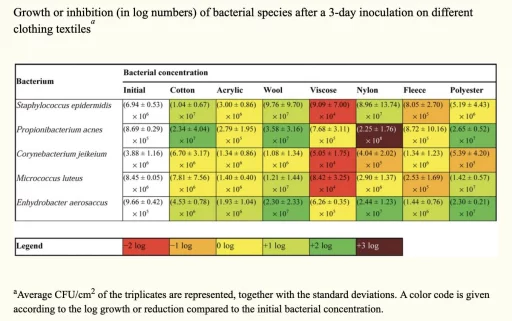
That's why a merino wool garment barely smells of perspiration.
So if some people have worn the same merino shirt throughout confinement (!), we guarantee a minimum of 72 hours' wear without washing. That's why our shirts are named 72 hours shirts !
And it saves the planet in terms of the water used for washing.
Advantages Optimum thermoregulation and improved odour control. The ideal fabric!
Drawbacks Washing instructions: 30° wool programme, 600 rpm drum, no fabric softener
3) Tencel® or Lyocell, an optimal material
The TENCEL®is a fibre derived from the pulp of wood (beech, eucalyptus or bamboo), which we have already discussed in a previous article. article of this blog.
This material has excellent thermoregulation and drying properties. It keeps 13% humidity without feeling unpleasant. It outperforms cotton in this respect.
In terms of odour management, it is just below wool (which retains optimum mechanical structure) but superior to cotton. So it's our second choice in this selection of anti-perspiration fabrics.
Advantages very good absorption and drying, good odour management, fresh feeling
Drawbacks the fabric is very fluid: for a men's wardrobe, mix with wool
In fact, there are now ‘first layers’ made from merino wool or Tencel that are both elegant and high-performance. Here are a few examples of ours.
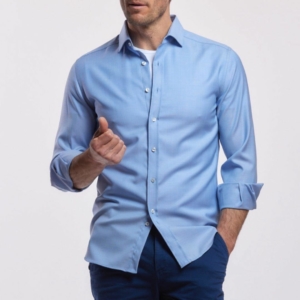
72 hours Biella shirt

white anti perspiration shirt
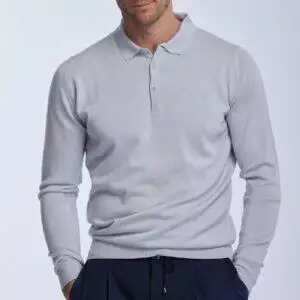
merino button-neck jumper

ultra-comfortable merino poloshirt
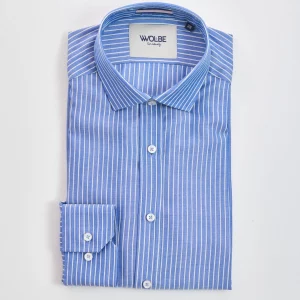
72 hours Zephyr shirt

short sleeves knitted merino wool poloshirt
For example, VISCOSE, a wood pulp derivative like Tencel® (but chemically treated in a much less eco-responsible way) was analysed - in the same study by the University of Gent - as being free from malodorous bacteria. So it's a good choice for interior linings.
4) Linen is a real solution
The LINENthe most environmentally-friendly plant fibre, has properties that are very similar to or even better than those of cotton in terms of performance.
Its hydrophilic pectins, which bind the fibres together, enable it to absorb up to 20% of its weight in moisture, without changing the way it feels. The thermoregulatory effect of these same pectins will keep us cool in summer. As far as odours are concerned, the observations are similar to those for cotton.
Advantages Optimum absorption, thermoregulation and odour elimination in the wash.
Drawbacks The fibre is not very soft and creases (but knitted linen is pleasant).
5) Cotton is not heat-regulating and does not dry quickly
The COTTONthe most widely used plant material, is hydrophilic. It absorbs perspiration completely. And paradoxically, it makes the body feel colder because it dries very slowly. Much slower than wool and polyester. So it's the sensation of wet fabric that lowers the body temperature... But it's really not pleasant!
If you keep a cotton T-shirt in the open air, in summer, without any significant effort, no problem, you'll stay dry. But one slight acceleration will make the sensation very unpleasant. The same goes for a cotton shirt in winter, under a jacket or coat...
In terms of odours, cotton fibre keeps malodorous bacteria trapped in its fibres.
However, as cotton is hydrophilic, it will absorb water and washing agents perfectly. All stinky bacteria should therefore be eliminated after a good wash. This is not the case with polyester or nylon.
Advantages Optimum absorption, eliminates odours during washing
Drawbacks Long drying time (feeling of damp clothing against the skin)

6) Synthetics are very bad in terms of odour
As you may have guessed, synthetic fibres (POLYESTER and POLYAMIDE -nylon, elastane- are not as effective as you might think.
A bit paradoxical when you consider how widespread they are in sport, don't you think? In fact, they're very bad at managing odours...
Once again, this is very rational when you analyse the molecular structure of these materials. Derived from petrochemicals - and therefore from the planet's non-renewable resources - they have three properties that set them apart from natural fibres:
- They are hydrophobic: they do not tolerate water. So they quickly repel moisture over a large surface area (towards the outside or inside the body). This will speed up the drying process...if you're in the open air...
- They are lipophilic: they love oily substances. And bacteria - smelly bacteria included - travel in them. Unfortunately, synthetic fibres keep these oils preciously as they evacuate water. So their concentration will gradually increase in the fabric.
- Finally, they are a powerful magnet for at least one smelly bacterium, the micrococcus. Who doesn't like the natural fibre environment.
These properties are therefore ideal for speeding up the evacuation of perspiration (in the open air), but disastrous for odour management!

The table below (taken from the same study by the University of Ghent in November 2014) clearly shows that the odours perceived in a polyester T-shirt after intense physical effort are much more unpleasant (0 = neutral, 10 = unbearable) than in a cotton T-shirt.
Even when washed, the hydrophobicity of synthetic fibres will repel cleaning agents and trap the oil. So the smell won't go away, and will even increase over time. There's a downside to every medal...

And although biocidal treatments exist today to remedy the odour problem, they are essentially chemical (nanoparticles such as silver ions, zinc, etc.). They are superimposed on the garment at the end of production (finishing). But either they disappear after a few washes, or their safety has not yet been proven. This is what a study by 60 millions de consommateurs.
Advantages : maximum moisture evacuation (in the open air), very fast drying.
Drawbacks : stubborn odours...that won't wash away
7) An innovative solution: 37°5 ® technology
37°5 ® technologylink here) promises dynamic thermoregulation. This means that it will evacuate heat from the body, all the more so when you heat up strongly.
This technology uses natural micro-particles infused directly into the fibres, at a microscopic level (they don't wash away and are long-lasting). These particles absorb and evacuate large quantities of the infrared rays emitted by the body when it heats up. And maintain an ideal temperature of 37°5.
After the world of outdoor (Salomon has a trail textile range in 37°5), we've incorporated it into our shirts. With 50% Tencel® and infused with New Life® recycled polyester. This is the Acceleration. We'll let you discover the film used to explain the benefits. there.
Advantages very good thermal regulation, natural origin, long-lasting
Drawbacks less effective than merino wool for odor control

So what are the best materials for managing perspiration?
You've already realised that to reduce perspiration, the fabric itself has to regulate body temperature. By keeping you cool when it's hot, the natural perspiration mechanism is not triggered.
To limit odours, the fabric must not retain the bacteria responsible for them.
Your base layer should ideally be made of merino wool, Lyocell, Tencel® or flax if you've planned for minimum effort. The natural 37°5 ® technology is also highly effective.
Your second and third layers will depend on your requirements in terms of protection. However, they must be breathable. There's no point in buying a blazer jacket or a car coat completely waterproof with zips under the armpits, if you're keeping a shirt made of cotton ! And inversely.
The synthetic materials are to be avoided if you want to eliminate odours.
But they're still great at wicking away perspiration!
You now have all the information you need to make the best choice of clothes. And if you don't have a clue, the WOLBE wardrobe has been designed to prevent you from sweating...
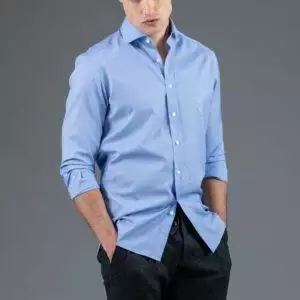
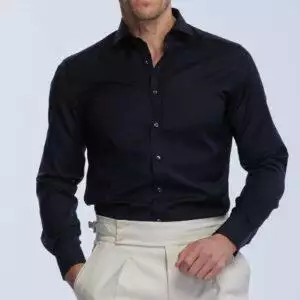
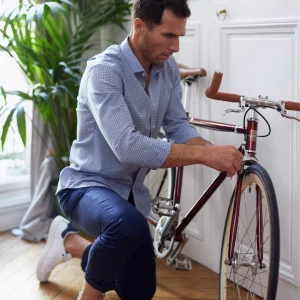
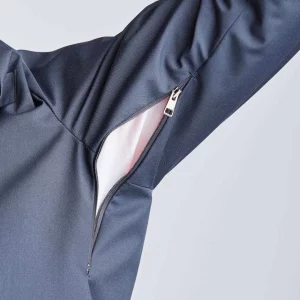
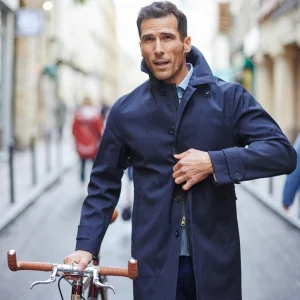
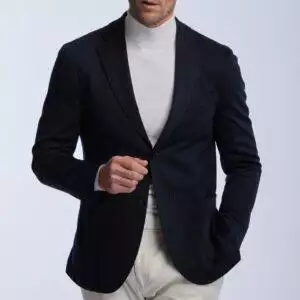
2 comments
ernest
génial comme infos
je note
par contre vos prix sont fous, je reviens vous voir quand je serai riche
Franck
Bonjour,
Ces informations sont essentielles dans le choix de nos vêtements et notamment ceux pour aller au bureau. Rien de plus désagréable d’avoir des auréoles sous les bras et en plus de ressentir une odeur de transpiration.
J’ai pu tester la chemise WOLBE et la sensation de rester sec en ne ressentant aucun signe d’humidité sous les aisselles même sous une veste et une surveste est très agréable surtout en deuxième partie de journée. On reste frais et pas de signe d’auréoles sous les bras (vis à vis des collègue de bureau c’est un vrai plus).
J’attends le développement de la gamme WOLBE pour un choix plus important dans les chemises.
Franck
Comments are closed.